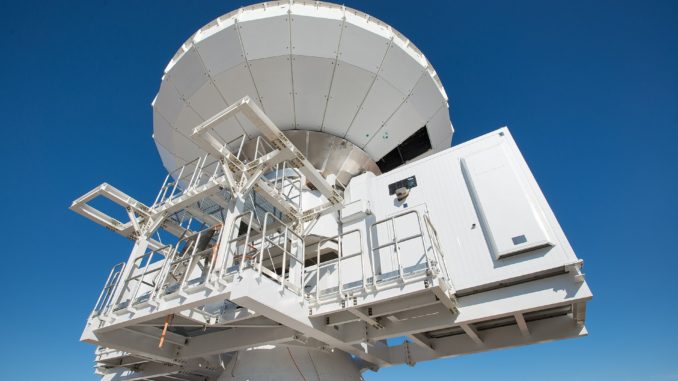
To study the most extreme objects in the universe, astronomers sometimes have to go to some extreme places themselves. Over the past several months, a team of scientists has braved cold temperatures to put the finishing touches on a new telescope in Greenland.
Taking advantage of excellent atmospheric conditions, the Greenland Telescope is designed to detect radio waves from stars, galaxies and black holes. One of its primary goals is to join the Event Horizon Telescope (EHT), a global array of radio dishes that are linked together to make the first image of a supermassive black hole.
The Greenland Telescope has recently achieved two important milestones, its “first light” and the successful synchronization with data from another radio telescope. With this, the Greenland Telescope is ready to help scientists explore some of the universe’s deepest mysteries.
“We can officially announce that we are open for business to explore the cosmos from Greenland,” said Timothy Norton of the Harvard-Smithsonian Center for Astrophysics (CfA), Senior Project Manager for the telescope. “It’s an exciting day for everyone who has worked so hard to make this happen.”
In December 2017, astronomers were able to successfully detect radio emission from the Moon using the Greenland Telescope, an event astronomers refer to as “first light.” Then in early 2018, scientists combined data from the Greenland Telescope’s observations of a quasar with data from the Atacama Large Millimeter/submillimeter Array, or ALMA, in Chile. The data from the Greenland Telescope and ALMA were synchronized so that they acted like two points on a radio dish equal in size to the separation of the two observing sites, an achievement that is called “finding fringes.”
“This represents a major step in integrating the telescope into a larger, global network of radio telescopes,” said Nimesh Patel of CfA. “Finding fringes tells us that the Greenland Telescope is working as we hoped and planned.”
The Greenland Telescope is a 12-meter radio antenna that was originally built as a prototype for ALMA. Once ALMA was operational in Chile, the telescope was repurposed to Greenland to take advantage of the near-ideal conditions of the Arctic to study the universe at specific radio frequencies.
The Greenland location also allows interferometry with the Submillimeter Array in Hawaii, ALMA and other radio dishes, to become a part of the northernmost component of the EHT. This extends the baseline of this array in the north-south direction to about 7,500 miles—nearly the Earth’s diameter.
“The EHT essentially turns the entire globe into one giant radio telescope, and the farther apart radio dishes in the array are, the sharper the images the EHT can make,” said Sheperd Doeleman of the CfA and leader of the EHT project. “The Greenland Telescope will help us obtain the best possible image of a supermassive black hole outside our galaxy.”
The Greenland Telescope joined the EHT observing campaign in the middle of April 2018 to observe the supermassive black hole at the center of the galaxy M87. This supermassive black hole and the one in our galaxy are the two primary targets for the EHT, because the apparent sizes of their event horizons are larger than for any other black hole. Nevertheless exquisite telescope resolution is required, equivalent to reading a newspaper on the Moon. This capability is about a thousand times better than what the best optical telescopes in the world can achieve.


Be the first to comment